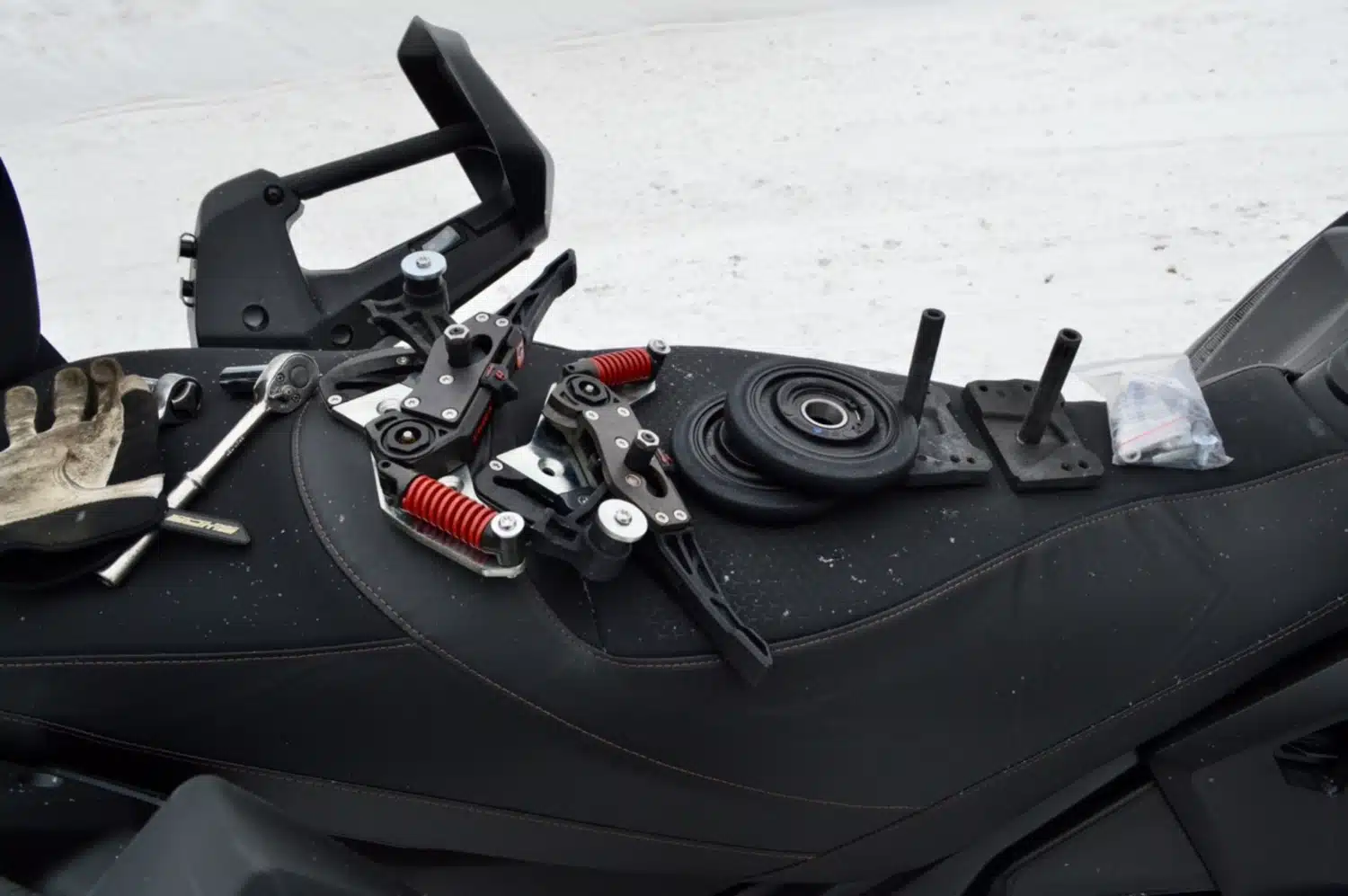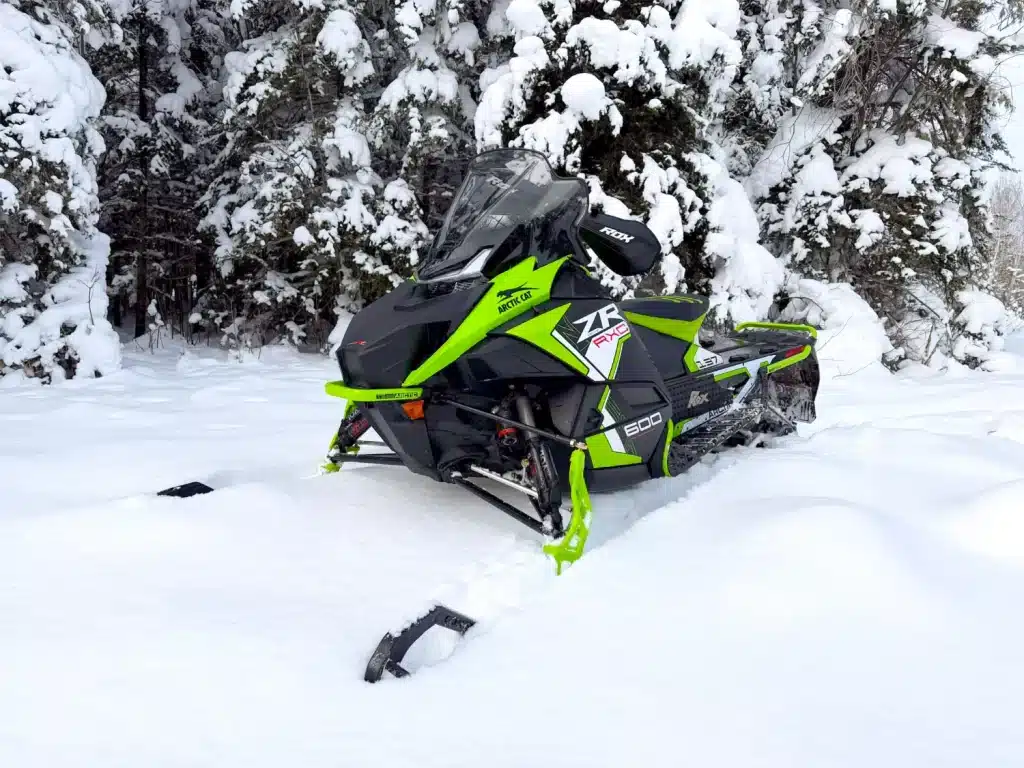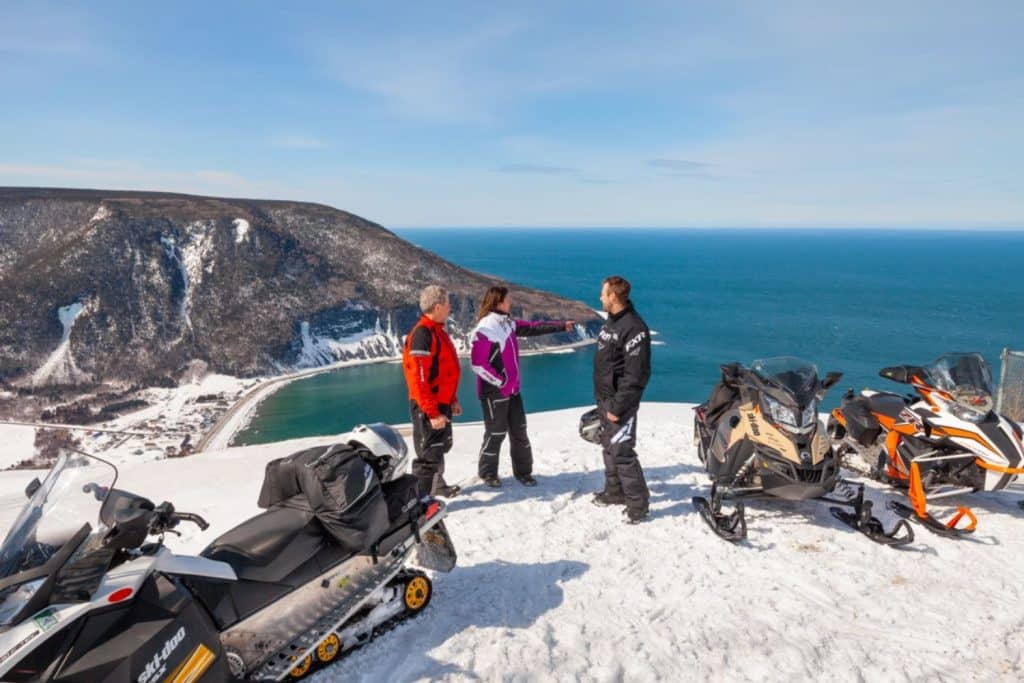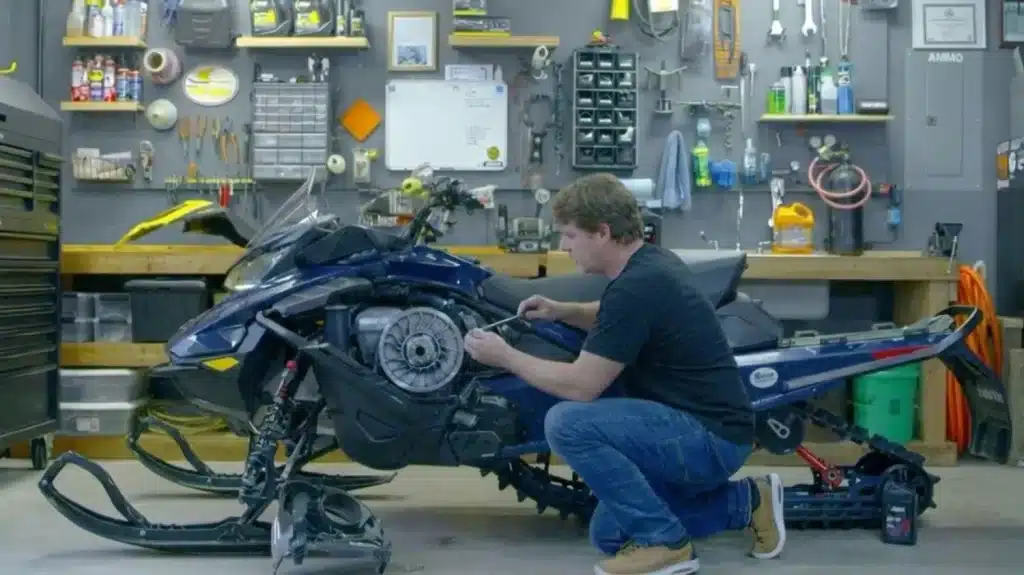Why a Rouski system?
I live in a small village in the lower St. Lawrence, near the river, which means I have to cross several roads to get to the forest. In my case, a system of wheels on skis is almost necessary. What’s more, when March arrives, gas stations are often cleared of snow, and large patches of asphalt wear out the skis. You’ve probably already experienced sliding on asphalt – it’s hard to control turns at low speeds. So a system of rollers greatly helps the gas station operation. So I had the chance to try and test the Kimpex Rouski.
Installation instructions
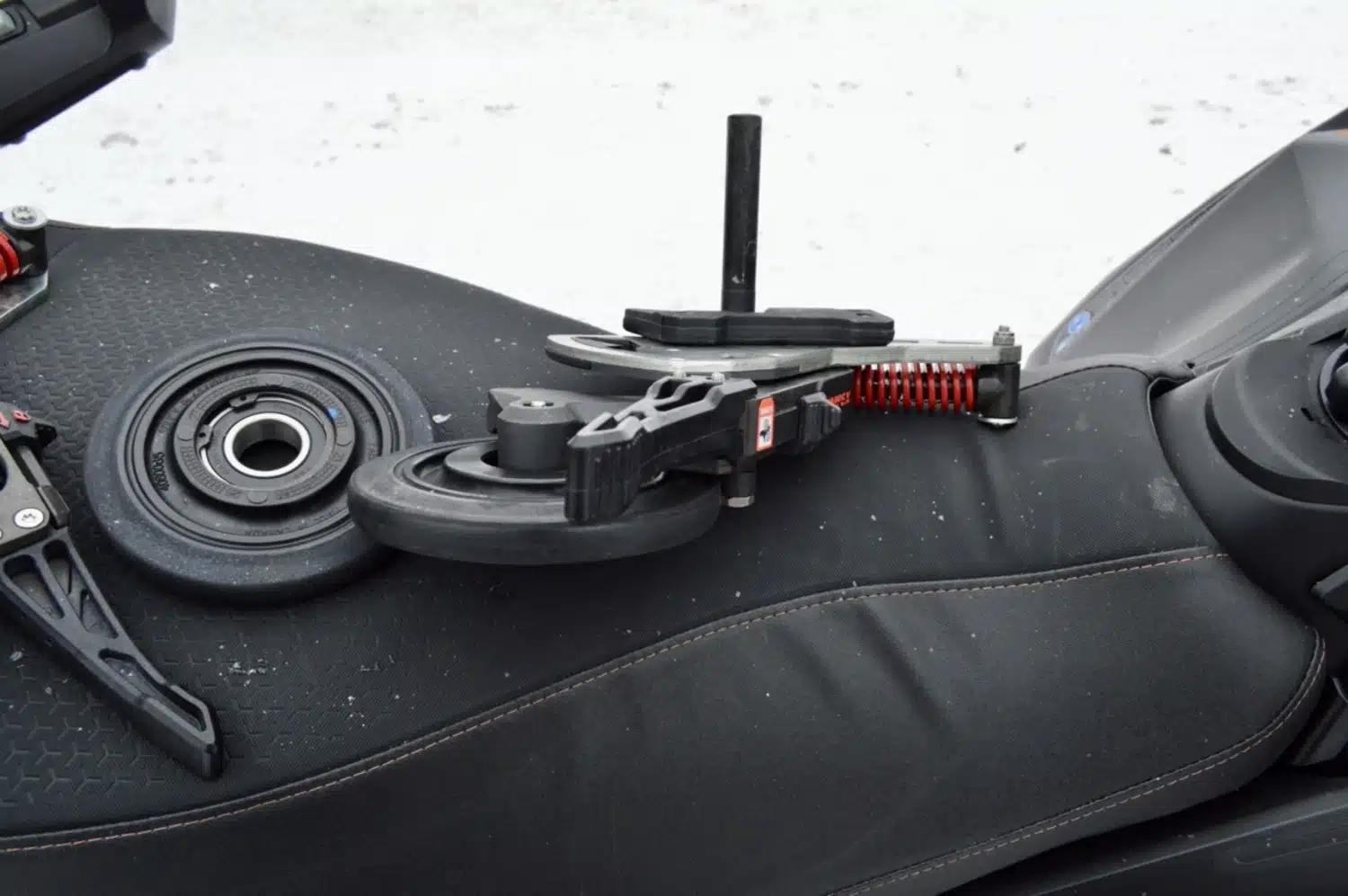
First of all, the Kimpex Rouski system is the same for all snowmobiles. What changes is the mounting plate, which is adapted to the type of runner you have. So it’s possible to find the right Rouski model for every snowmobile. Installation is relatively easy. First, lift the front of the snowmobile to release the skis, then remove the main bolt holding the ski in place, and insert the bolt and adapter holding the Rouski system in place. It’s important to recognize which side is left and which is right when installing the Rouski system, since the pedal used to activate the wheel is at the front, and the wheel is positioned on the inside towards the center of the snowmobile. When you look at the instructions, you need to remove the small bushing on one side and replace it with the washer supplied with the installation kit. Once the washer is in place, place the plate firmly on the ski and insert the main bolt. The plate is easy to hold, since it has the same molded shape as the ski. It’s very important to respect the recommended tightening in these cases, as it’s the key part. Once tightened, you’ll need to drill a hole with a quarter-inch drill bit in the ski to secure the adapter plate. This operation is easy to carry out, since it’s the plastic of the ski that needs to be drilled. We then insert the bolt into the hole we’ve just drilled, securing the Rouski assembly. After this step, we can install the caster on the adapter plate. And that’s all there is to it. Simple, you might say? Yes, most resourceful people will have no trouble installing the Kimpex Rouski assembly. For the second ski, we perform exactly the same operations.
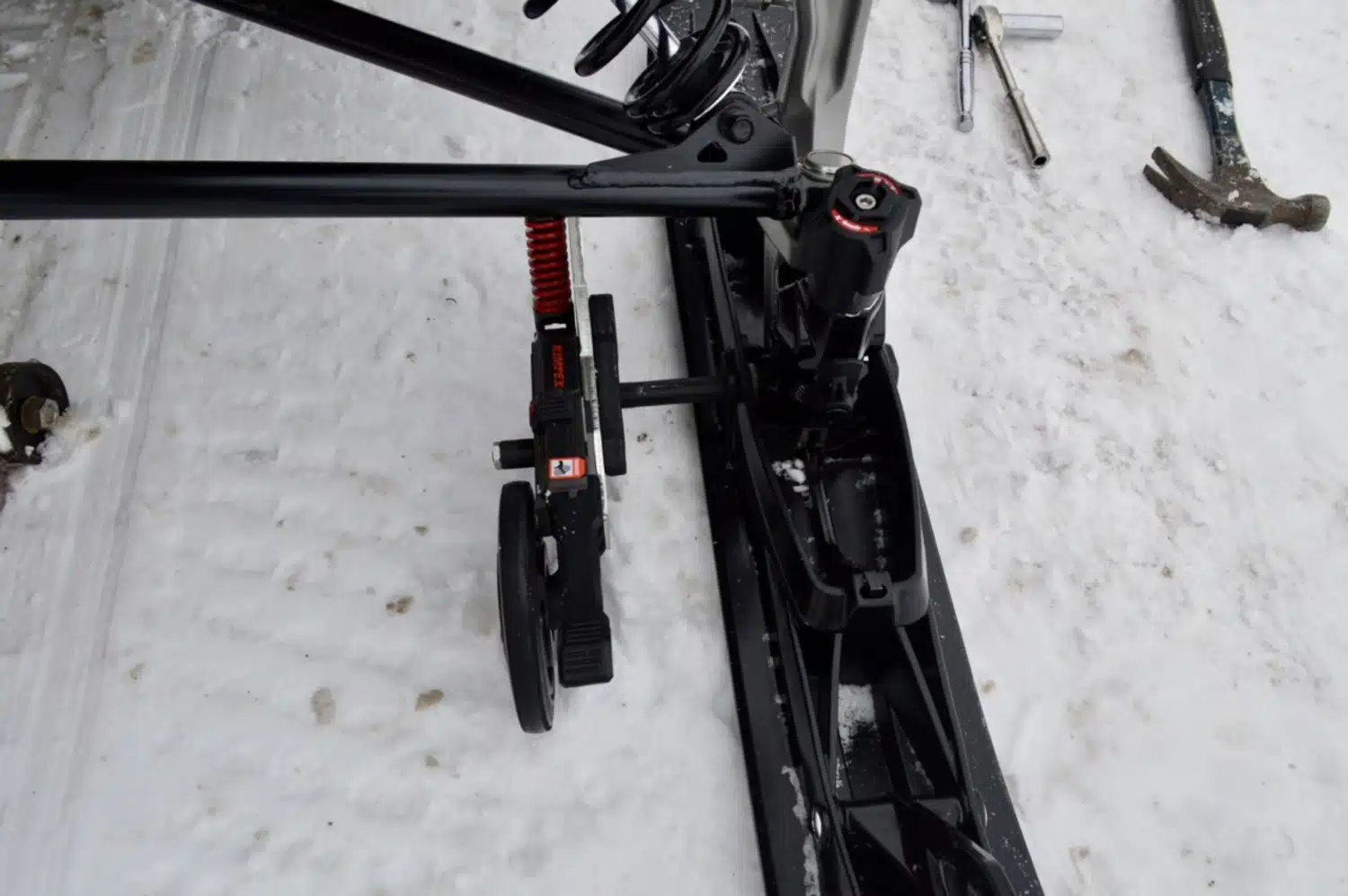
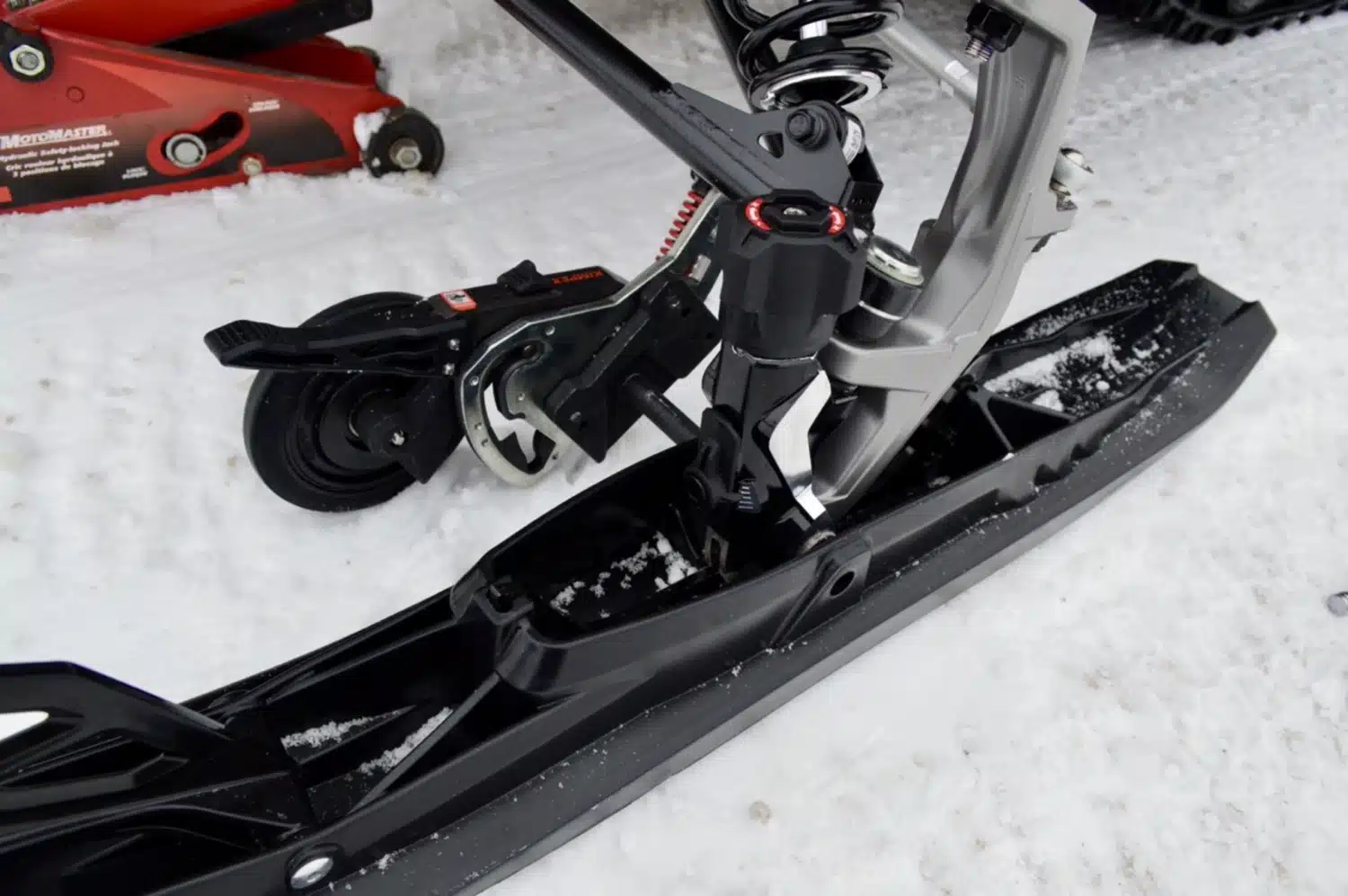
Now comes the moment of truth
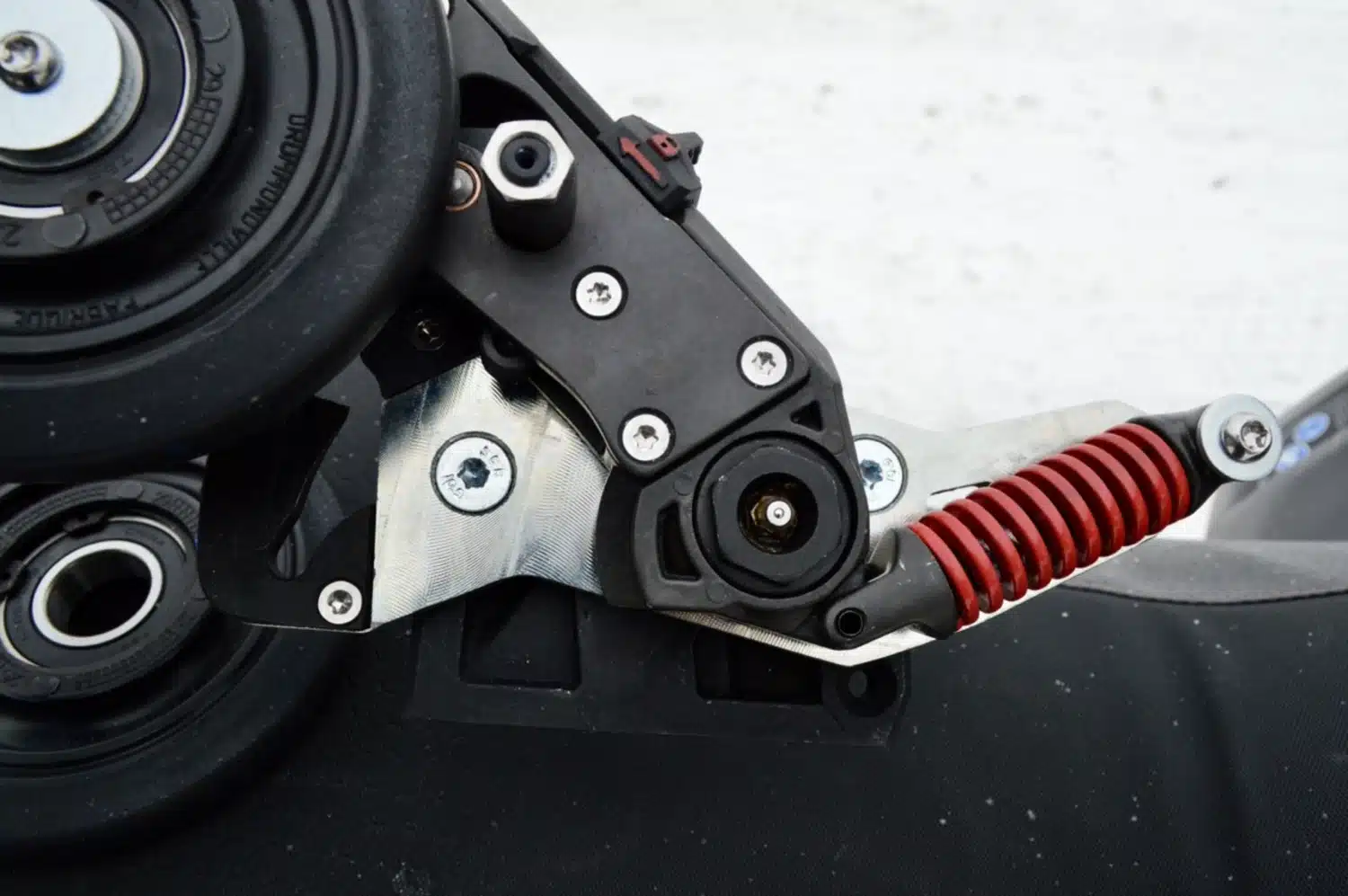
On my other snowmobiles, I had a system somewhat equivalent to this. But to activate the wheel, I had to lift the ski and, with my foot, activate the wheel to lower it to the down position. This operation is a bit tricky with bulky boots and a snowmobile suit; movements aren’t as fluid. In fact, the little arm I used to operate the wheel was so small that I often broke my boot. With the Kimpex Rouski system, you don’t have to bend over to lift the ski, just press down on the little arm to lower the wheel, which engages with ease. I say arm, but it’s much more like a pedal. So, as well as being easy to engage, I’m no longer afraid of breaking my boots. To return the caster to the up position, I simply lift the front of the ski and the mechanism clicks into place with ease. If you’re more skilful, you don’t even need to get off the snowmobile: just a little left and right to lift the skates, and the two wheels fall back into the up position.
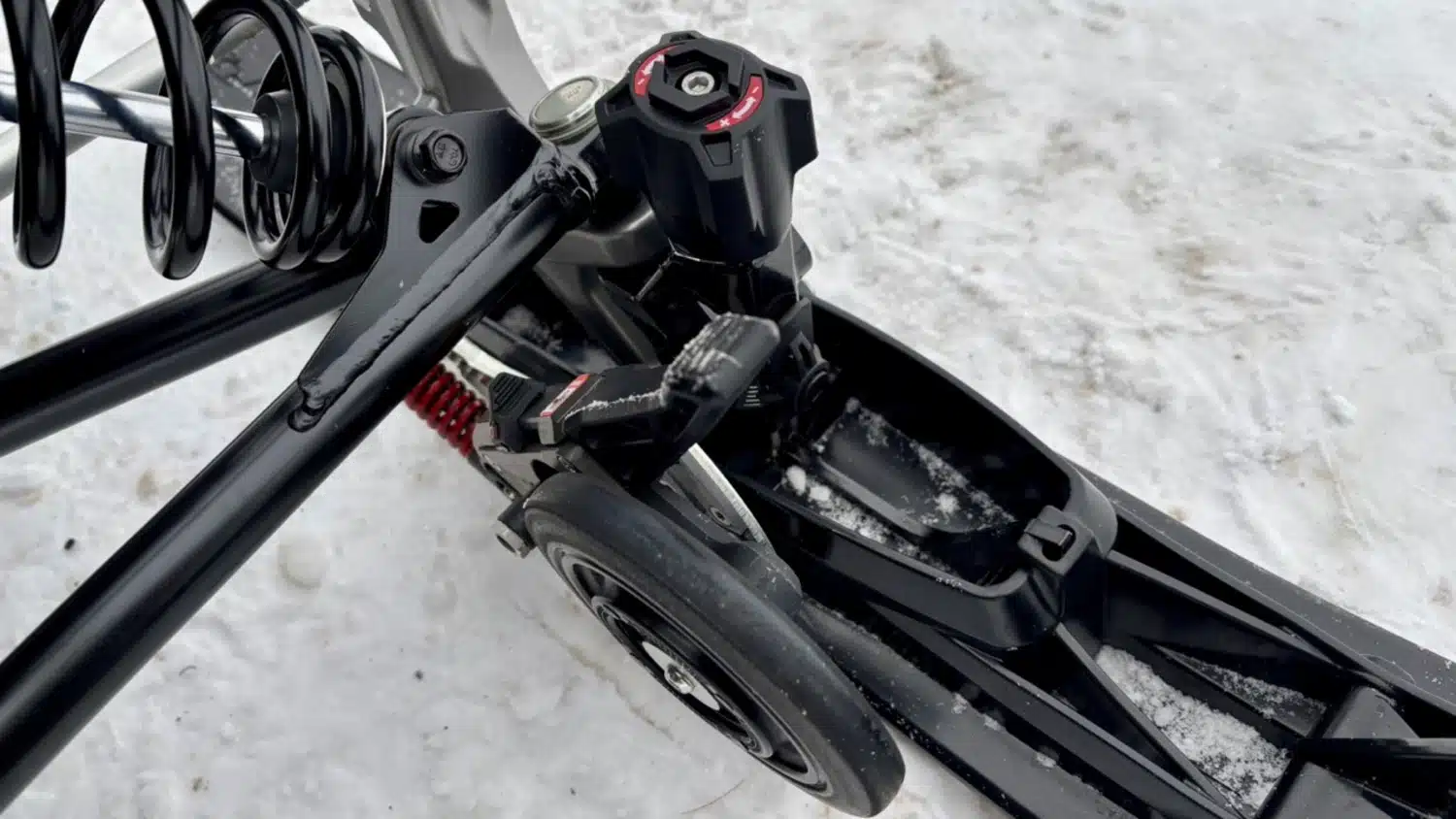
My opinion
Over the past few years, I’ve had the opportunity to try out various models. Today, I would definitely invest in the Kimpex Rouski model. I choose this model for its ease of installation, for the ease with which the wheels can be put on and taken off, and for the brand’s sturdiness and reliability. Certainly, this caster system is not designed for off-trail or mountain snowmobiles, due to the extra weight on the runners and the snow accumulation that occurs in deep snow. In fact, the Rouski’s do a bit of blocking in the snow in off-trail mode.
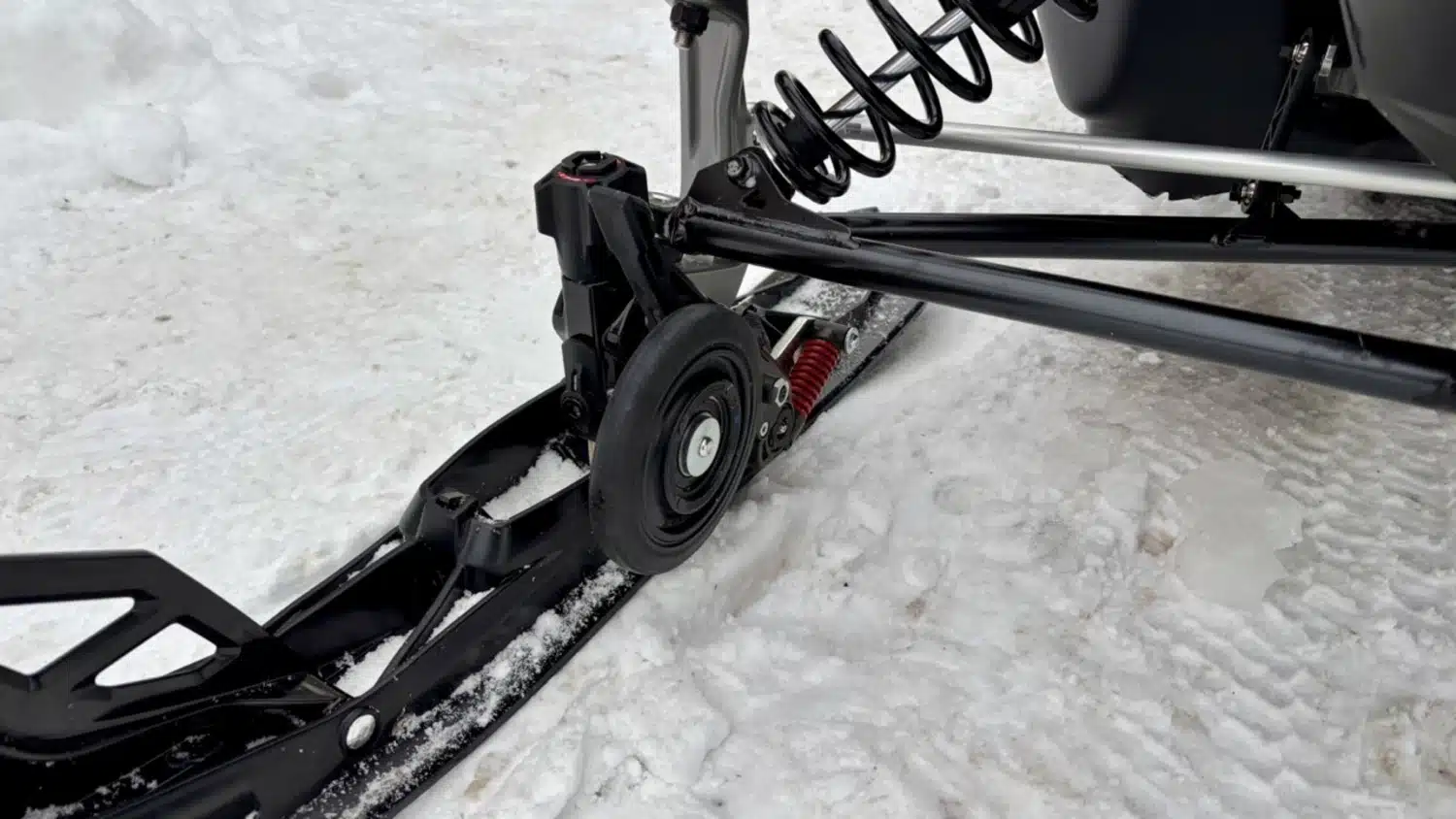
Advantages:
- Quick and easy installation
- Precise instructions
- Product quality
Disadvantages :
- Extra weight on skates
- Takes away floatability on deep snow.
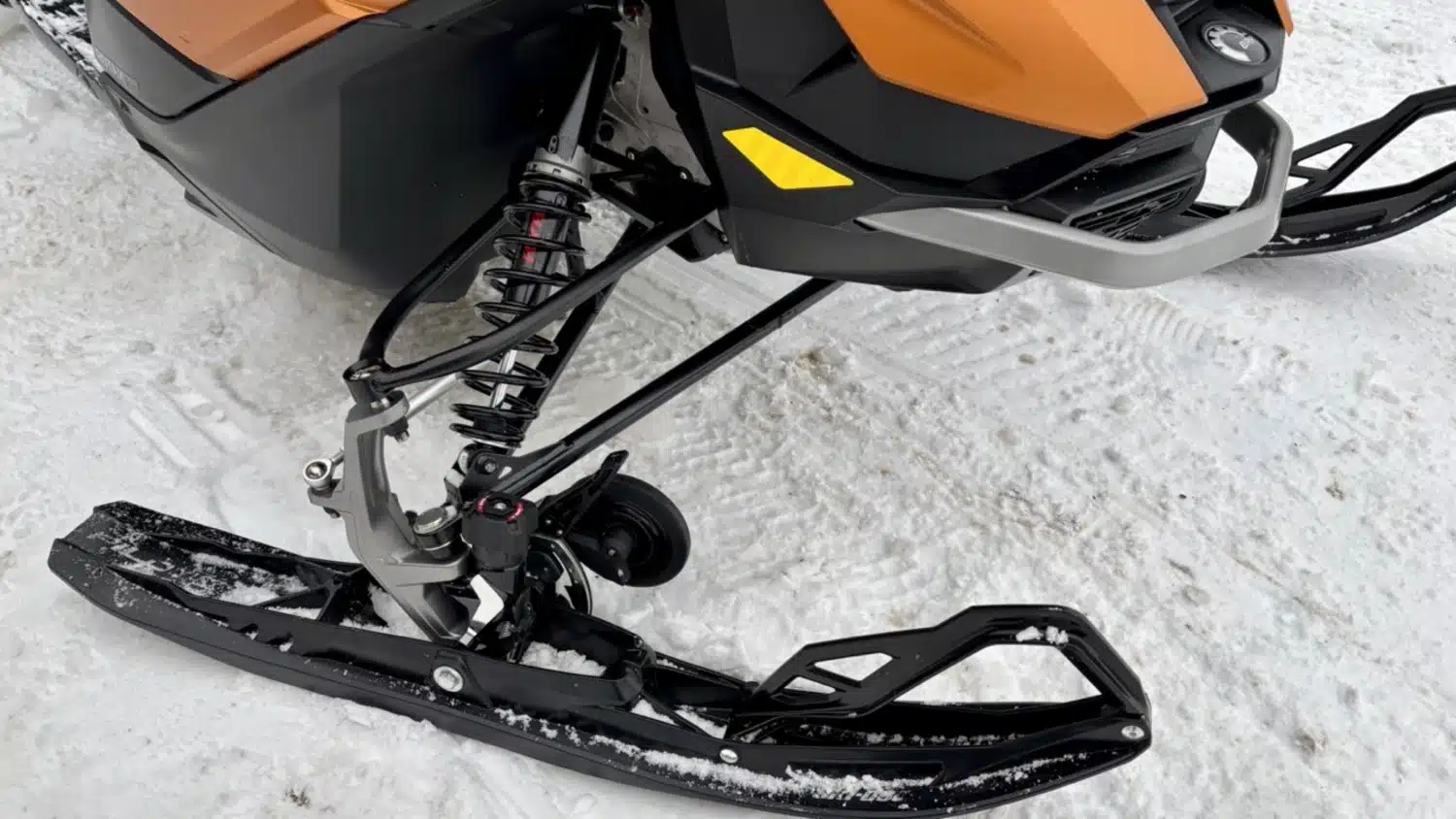
I would like to thank Kimpex for allowing me to install and test this Rouski kit on the Ski-Doo Grand Touring 2025.

